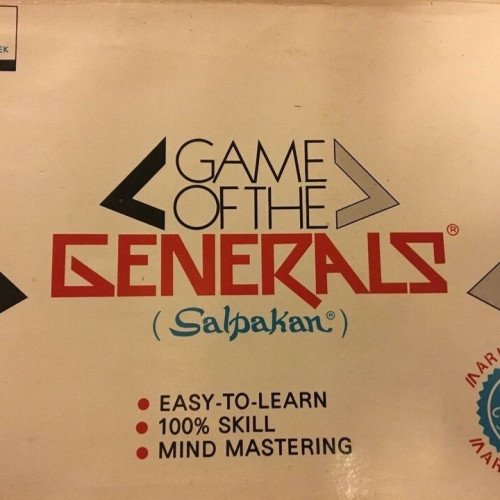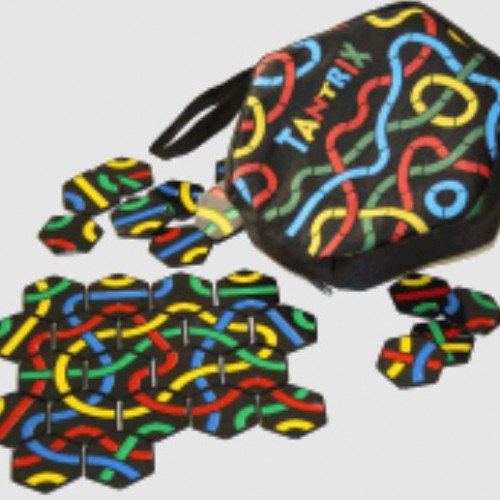GAME OF THE GENERALS VS TANTRIX

GAME OF THE GENERALS
The Game of the Generals, also called GG or GOG as it is most fondly called, or simply The Generals, is an educational war game invented in the Philippines by Sofronio H. Pasola Jr. in 1970. Its Filipino name is "Salpakan." It can be played within twenty to thirty minutes. It is designed for two players, each controlling an army, and a neutral arbiter (sometimes called a referee or an adjutant) to decide the results of "challenges" between opposing playing pieces, that like playing cards, have their identities hidden from the opponent. The game simulates armies at war trying to overpower, misinform, outflank, outmaneuver, and destroy each other. It optimizes the use of logic, memory, and spatial skills. It simulates the "fog of war" because the identities of the opposing pieces are hidden from each player and can only be guessed at by their location, movements, or from the results of challenges. The game allows only one side's plan to succeed, although a player may change plans during the course of the game. In addition, there are two different ways of winning the game (see below). Certain strategies and tactics, however, allow both sides the chance of securing a better idea of the other's plan as the game progresses. Players can also speak or gesture to their opponents during matches, hoping to create a false impression about the identity of their pieces or their overall strategy. This game was invented by Sofronio H. Pasola, Jr. with the inspiration of his son Ronnie Pasola. The Pasolas first tried the Game of the Generals on a chessboard. Even then, the pieces had no particular arrangement. There were no spies in the experimental game; but after Ronnie Pasola remembered the James Bond movies and Mata Hari, he added the Spies. Making the pieces hidden was the idea of the Pasolas after remembering card games. The Game of the Generals' public introduction was on February 28, 1973. After the game was made, it angered many Filipino chess players thinking that Pasola was trying to denigrate or supplant chess.
Statistics for this Xoptio

TANTRIX
Tantrix is a hexagonal tile-based abstract game invented by Mike McManaway from New Zealand. Each of the 56 different tiles in the set contains three lines, going from one edge of the tile to another. No two lines on a tile have the same colour. There are four colours in the set: red, yellow, blue, and green. No two tiles are identical, and each is individually numbered from 1 through 56. In the multiplayer version of the game, each player chooses a colour, so there are between two and four players. Each draws one tile from the bag, and the person who draws the highest number goes first. Each player then takes five more tiles from the bag, and places all six tiles face up in front of them. The first person plays one tile, usually with their colour on it. Play then rotates clockwise. After playing a tile, each player takes a replacement tile from the bag, so that they always have six in front of them. Tiles played must match the colour of the edges adjoining it. When three tiles surround an empty space so that it is effectively half covered this is called a forced space. If the person whose turn it is has a tile that fills that space they must play it. The player repeats this process until there are no more forced spaces that they can fill, at which stage they make a free move, where they can play any tile as long as they don't breach the three restriction rules given below. Once they have had a free move, they must then fill any more forced spaces that they can. Thus one player's turn can consist of several moves.